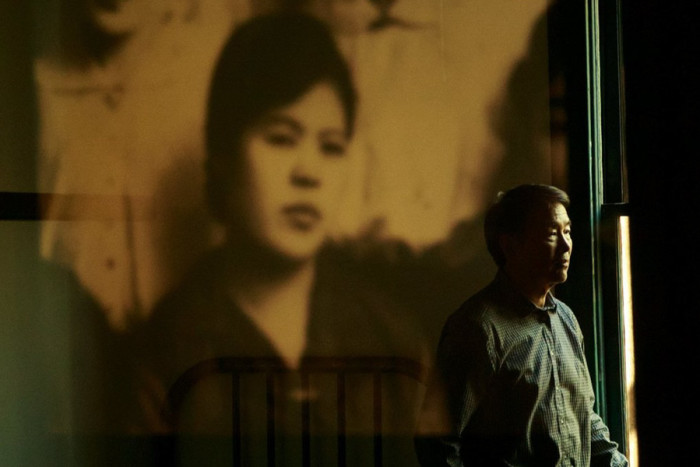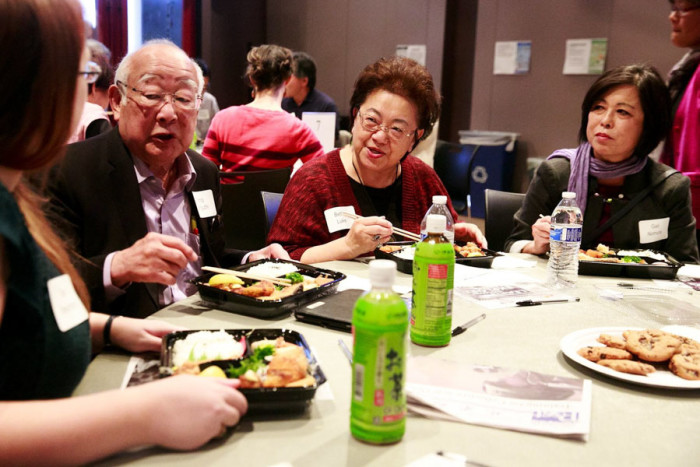
“My grandfather and my grandmother, they were number 14448 … that was their prisoner number,” says Geoff Froh. His family was held in government-run camps that imprisoned Japanese Americans during World War II.
Froh, whose mother was born at the Tule Lake camp in California, was able to find out more about his family’s history through Densho, a Seattle-based nonprofit founded to preserve the history of Japanese incarceration. (You might know it as Japanese “internment,” but Densho says “incarceration” is more accurate).
“That was really weird to see for the first time,” Froh says, describing the powerful moment when he first learned their prisoner number. Densho — where Froh works as a deputy director — is working to ensure that more people can have such powerful experiences.
The organization has spent two decades collecting oral histories (857 so far) and digitizing historical items related to Japanese incarceration. Now in honor of this fall’s 70th anniversary of the closing of the camps — which held nearly 120,000 Japanese Americans during the two-and-half years they operated — Densho is launching the Names Registry.
“Often when we talk about the camps, we talk about the 120,000 people. But the Names Registry is a way to talk about individuals and families,” says Densho Executive Director Tom Ikeda.
When completed, the registry will allow anyone with an Internet connection to search names of prisoners and track their experiences through incarceration. Froh is particularly excited to be adding data about people as they left the camps, as well as when they entered (which is more commonly available).

“It tells you a lot about how people’s lives were transformed by the camps, instead of just who was there,” says Froh. He says prisoners gave birth, got married and shifted to other camps during incarceration. The release data also helps track the beginnings of Japanese American communities across the country after the camps closed, as it indicates where released prisoners were headed.
I talked with Froh at the Panama Hotel Tea and Coffee House in Seattle’s Chinatown International District. Below our feet, a window in the floorboards reveals the hotel’s basement and items left behind by local Japanese American families during the forced evacuations that sent them to the camps. It’s a reminder of the lingering legacy of incarceration in our own region and it makes the history feel personal and immediate.
And that’s Densho’s ultimate goal, to make this shameful and important piece of our past accessible to everyone. To do so, they want to collate all of their collected information — oral histories, registry information and documents — and host it online.
“The plan is to have all of this linked to the oral histories and the digital-repository items,” says Froh. “So you could look up a name and see if there was any oral-history mention … and also photographs they appear in, camp newspapers, all of that.”
Ikeda adds, “Even though it’s 70 years later, we’re making these names more accessible than they ever have been.”
They still have a ways to go to reach that ultimate goal. They need more money and volunteers to transcribe, “clean” and match all of the information. But the work is worth it, says Kyle Tanemura — who worked as an intern on the Names Registry project this summer. He believes such a project represents how future generations will interact with the past.
“Densho doesn’t care where you’re accessing info, or why; it’s just there for you online,” says Tanemura, who is studying computer science at California Polytechnical State University. “I think it’s a lot easier for students to use if they’re trying to do projects, and it’s just a lot more accessible in general.”
Froh is thinking a lot about preserving this history in the 21st century, as people who experienced the camps firsthand are getting older and passing away.
Densho has teamed up with African-American, Latino, Jewish and Native-American organizations to create a curriculum that links the history of Japanese American incarceration to contemporary issues of racism and xenophobia.
“It’s a lens through which to look at other parts of American history and think about the way that our society functions in times of war and crisis,” says Froh. He adds that Donald Trump’s recent statements about Mexican immigrants — stereotyping them as criminals — sound similar to propaganda used against Japanese Americans during World War II.
“[A lens] to think about the way we deal with immigration and to learn those lessons from the past.”
It’s a past that is never as far behind us as we’d like to believe.

